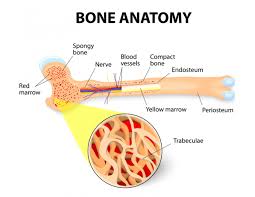Leave a Comment:
2 comments
Myeloma patient in remission. How long? ? Don’t know. Still live with it daily. God be with each of us with MM.
ReplyHere is to hoping for continued remission Carol!
David Emerson
Reply
Multiple Myeloma an incurable disease, but I have spent the last 25 years in remission using a blend of conventional oncology and evidence-based nutrition, supplementation, and lifestyle therapies from peer-reviewed studies that your oncologist probably hasn't told you about.
Click the orange button to the right to learn more about what you can start doing today.

Multiple myeloma (MM) is both a cancer of the bone marrow as well as a cancer of the bone. When I say that, what I mean is MM or monoclonal plasma cells damage bone marrow as much as they damage our bones. When MM and therapies to treat MM damage bone marrow it is called myelosuppression. When MM and therapies to treat MM damage our bones it is simply considered to be bone involvement.
It may sound odd but bone is living tissue. Our bones are constantly dying and growing. This is called “remodeling.” Monoclonal proteins interrupt our bones from remodeling.
To say that bone damage is a symptom, side effect and COD of MM patients is to say that MM increases the risk of bone involvement and pathological fractures and that pathological fractures increases the risk of death of MM patients.
Therefore, MM survivors must spend our entire lives watching, measuring and undergoing therapies to strengthen our bones.
A major challenge to strengthening our bones is both the multiple myeloma disease as well as certain standard-of-care (SOC) MM therapies that we take to fight our myeloma.
The blog post “What is Multiple Myeloma? Oncology has it backwards…“ represents a light bulb going off over my head. When I read a study documenting that MM symptoms, side effects and causes of death all overlapped, I almost fell off my chair. Oncology has it backwards…”the cure is worse than the disease,” as the saying goes…
I think a contributing factor, a problem that contributes to conventional oncology not understanding the long-term damage done by toxic therapies is the fact that different drug companies track side effects differently.
Multiple Myeloma Symptoms Cloud Multiple Myeloma Side Effects-
Bone involvement in MM- bone pain, bone weakness, bone fractures- can be either a symptom or a side effect of FDA approved, standard-of-care, MM therapies. Conventional oncology’s SOC protocol therapy is either bisphophonate or denosumab therapy.
If the newly diagnosed MM patient suffers from bone damage to his/her spine, they may consider Kyphoplasty/Vertebroplasty.
If you have any questions about your MM or your bone health, scroll down the page, post a question or comment and I will reply to you ASAP.
Thank you,
David Emerson
“Overview–
Multiple myeloma is a type of blood cancer. It forms in plasma cells, which are made in the bone marrow, and causes cancer cells there to rapidly multiply. These cancer cells eventually crowd out and destroy healthy plasma and blood cells in the bone marrow.
Plasma cells are responsible for producing antibodies. Myeloma cells can cause the production of abnormal antibodies, which can cause the blood flow to become slow. This condition is also characterized by the existence of multiple tumors…
Multiple myeloma can cause soft spots in the bone called osteolytic lesions, which appear as holes on an X-ray. These osteolytic lesions are painful and can increase the risk of painful breaks or fractures…
Multiple myeloma can be painful. While treating the myeloma itself is the first priority, several treatment options are available that focus purely on relieving your pain. Medical and natural treatment options are available to treat bone pain and lesions.
Always talk to your doctor before starting a new treatment. Pain treatments may help bone pain but won’t stop the myeloma from growing on its own.
Medical treatments-Medical treatment options include the following:
You should avoid over-the-counter (OTC) medications since they may interact with your other pain medications or cancer treatments. Consult your doctor before taking any OTC medications.
Myeloma patient in remission. How long? ? Don’t know. Still live with it daily. God be with each of us with MM.
ReplyHere is to hoping for continued remission Carol!
David Emerson
Reply